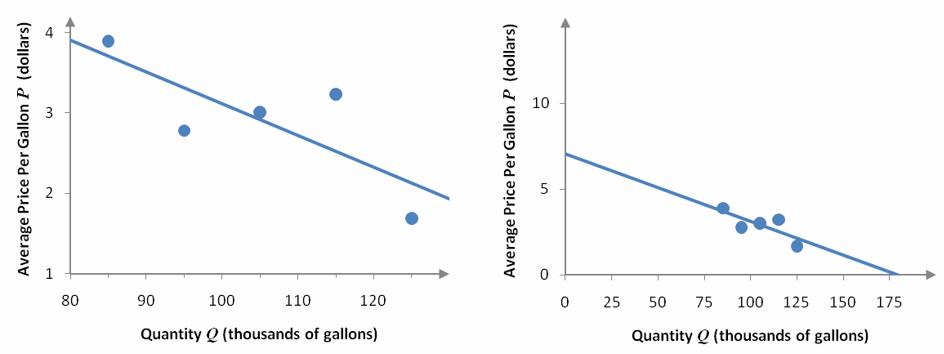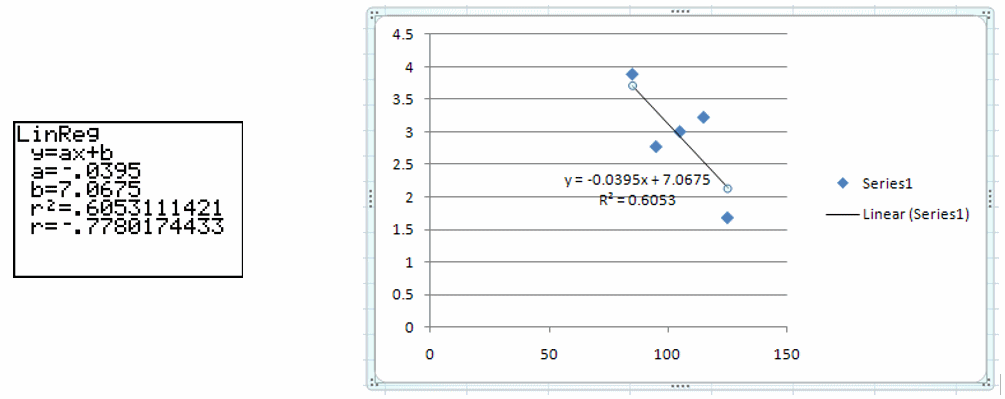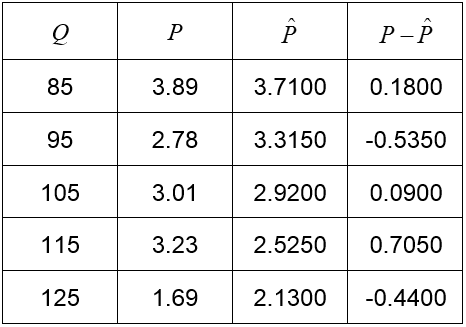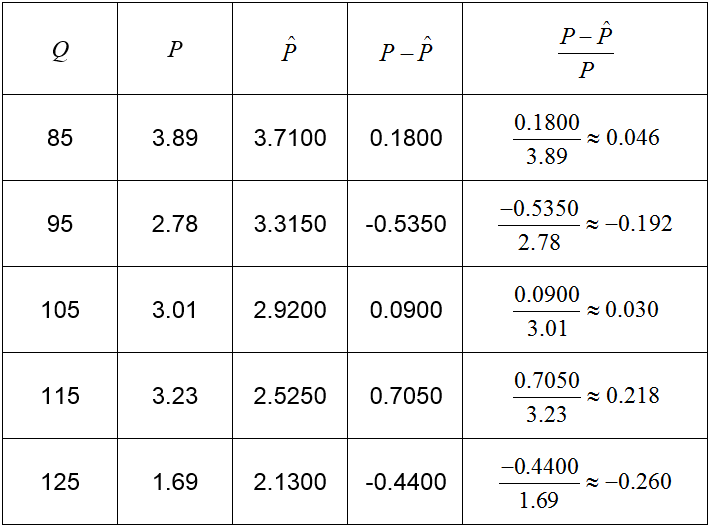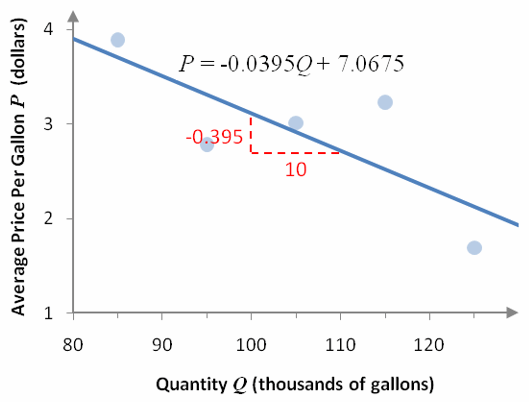How do you find cost, revenue and profit functions with several variables?
In Example 3, we examined a cost function of several variables. This proved useful for modeling the total cost in a business that produces several different goods like milk. If the company receives revenue from several different products, we can utilize the fact that the revenue from each individual product by multiplying the price per unit times the number of units sold to get the revenue for that product. By summing the revenue for each of the products, we can form a model for the total revenue.
In the next example, we’ll continue working with the organic dairy from Example 3 to model the total revenue from selling three types of milk.
Example 4 Organic Dairy Revenue
The organic dairy in Example 3 charges $3.49 per gallon for whole milk, $4.19 per gallon for 2% milk, and $4.59 per gallon for 1% milk. If the variables Q1, Q2, and Q3 represent the number of gallons of whole, 2% and 1% milk produced and sold respectively, find a linear function R(Q1, Q2, Q3) to model the total revenue.
Solution We’ll find a linear function of the variables Q1, Q2, and Q3. The coefficients in this function correspond to the increase in revenue from increasing the number of gallons of each type by 1 unit. These coefficients are simply the prices the dairy charges for one gallon of each type of milk. The linear function will have the form
R(Q1, Q2, Q3) = p1 Q1 + p2 Q2 + p3 Q3
where p1, p2, and p3 are the price per gallon for each type of milk.
Notice that there is no constant term in the sum since producing and selling no milk leads to no revenue. If we had included a positive constant, this would have been interpreted as revenue corresponding to (Q1, Q2, Q3) = (0, 0, 0). With the prices in place, we get a linear model for total revenue in dollars,
R(Q1, Q2, Q3) = 3.49Q1 + 4.19Q2 + 4.59Q3
It is very common for cost and revenue functions to have many variables. Each variable corresponds to a unique product or service that a business provides to consumers. The coefficients of the cost function represent the variable costs per unit for each product or service and the constant represents the fixed costs of production. The coefficients of the revenue function represent the unit price for each product or service.
Example 5 Profit
The cost function for the organic dairy is
C(Q1, Q2, Q3) = Q1 + 1.1Q2 + 1.25Q3 + 10,000
and the revenue function is
R(Q1, Q2, Q3) = 3.49Q1 + 4.19Q2 + 4.59Q3
where Q1 is the number of gallons of whole milk, Q2 is the number of gallons of 2% milk, Q3 is the number of gallons of 1% milk that the dairy produces and sells.
a. Find the profit function Profit(Q1, Q2, Q3).
Solution Profit is the difference between revenue and costs,
b. Find the profit per unit for each type of milk.
Solution The coefficients on the profit function correspond to the change in profit when the corresponding variable is increased by 1 unit. Since the coefficient of Q1 is 2.49, the profit increases by $2.49 when 1 more gallon of whole milk is produced and sold. This is the profit per gallon for whole milk. The same reasoning for the other types of milk leads to a profit per unit for 2% milk of $3.09 per gallon and $3.29 per gallon for 1% milk.
In real applications, the units are often modified to make the numbers more manageable. In Example 2, we examined the sales of a business in thousands of dollars given by S(A, E) = 105A + 1412E where A is the amount spent on advertising in thousands of dollars and E is the number of employees. If we were to find a value for this function like
S(10, 5) = 105(10) + 1412(5) = 8110
We would interpret this as indicating that advertising expenses of $10,000 and using 5 employees would lead to sales of $8,110,000. The variable A is scaled in thousands of dollars. Scaling a variable means that the actual amount is divided by an amount to obtain the value for the variable. In this case, dividing $10,000 by $1000 yields A = 10.
The dependent variable, sales, is also scaled in thousands of dollars. If we are given a value for this variable like 8110, we need to multiply by $1000 to get the actual amount. The value 8110 thousand dollars is the same as 8110($1000) or $8,110,000.
When independent variables are scaled, the cost and revenue functions change. In Example 3, we found the revenue function for an organic dairy that charges $3.49 per gallon for whole milk, $4.19 per gallon for 2% milk, and $4.59 per gallon for 1% milk. The function describing the revenue was
R(Q1, Q2, Q3) = 3.49Q1 + 4.19Q2 + 4.59Q3
where Q1 is the number of gallons of whole milk, Q2 is the number of gallons of 2% milk, and Q3 is the number of gallons of 1% milk that the dairy produces and sells. Since an organic dairy might produce and sell thousands of gallons of each week, we could choose to scale the independent variables in thousands of gallons. Instead of inputting values like 1000 into a variable, we would input 1 instead. This introduces subtle changes into the revenue function since changes of 1 unit in the scaled variable results in a change of 1000 in gallons of milk. Let’s look at how this will change the revenue function.
Let R(Q1, Q2, Q3) = p1 Q1 + p2 Q2 + p3 Q3 represent the revenue for the organic dairy where Q1, Q2, and Q3 are the amounts of whole, 2%, and 1% milk in thousands of gallons produced and sold respectively. As we found in Example 3, the coefficients p1, p2, and p3 are the unit prices of each type of milk. However, when the variables are scaled the meaning of one unit changes. Now the unit price corresponds to the price of 1 thousand gallons of milk. A price of $3.49 per gallon is equivalent to $3490 per 1 thousand gallons of milk. If we change each unit price to account for the scaling, we get
R(Q1, Q2, Q3) = 3490Q1 + 4190Q2 + 4590Q3
The value
R(0, 2, 0) = 3490(0) + 4190(2) + 4590(0) = 8380
represents the revenue from producing and selling 2000 gallons of 2% milk.
If we were to calculate the same revenue from the function in Example 3, we would get
R(0, 2000, 0) = 3.49(0) + 4.19(2000) + 4.59(0) = 8380
The key part of each calculation is middle term,
In each case, the units in red reduce to 1 leading to a function value of 8380 dollars. By examining the units carefully in each term, we can deduce the units on the revenue. The units on each term must be the same for the terms to add together properly.
Another possibility is to scale the variables in thousands of gallons but use the unit prices in dollars per gallon. In this case the middle term would be
In this case, the numbers multiply to 8.38 and the units are thousands of dollars.
To define the function with the revenue in thousands of dollars we would write the function as
R(Q1, Q2, Q3) = 3.49Q1 + 4.19Q2 + 4.59Q3
with each of the variables scaled in thousands of gallons. Now the revenue from 2000 gallons of 2% milk is calculated as
R(0, 2, 0) = 3.49(0) + 4.19(2) + 4.59(0) = 8.38
and the revenue is 8.38 thousand dollars or $8380.
Each of these models may be used to calculate the revenue for the organic dairy. However, the units you choose for the independent and dependent variables in the revenue and cost functions should match. If not, you might find yourself subtracting cost in dollars from revenue in thousands of dollars. This would lead to a value for profit that makes no sense.





